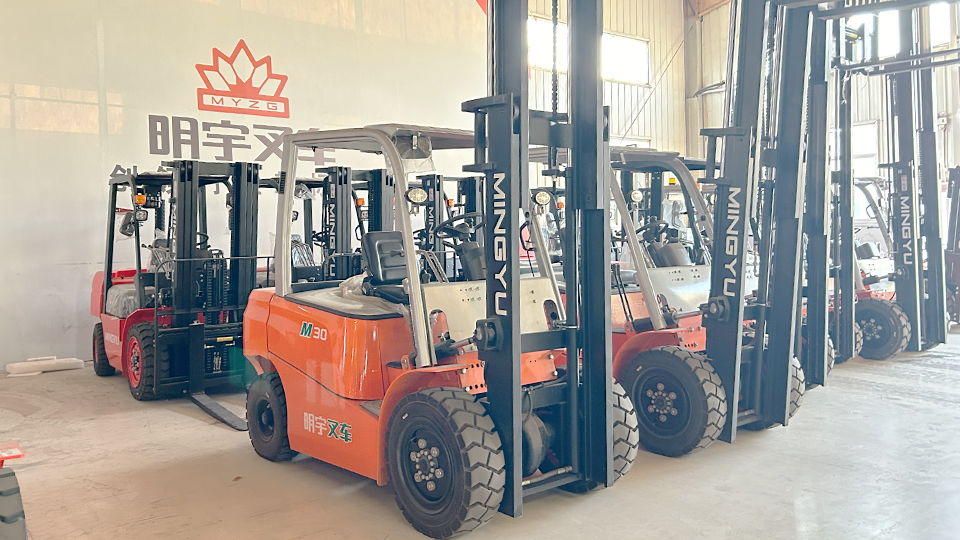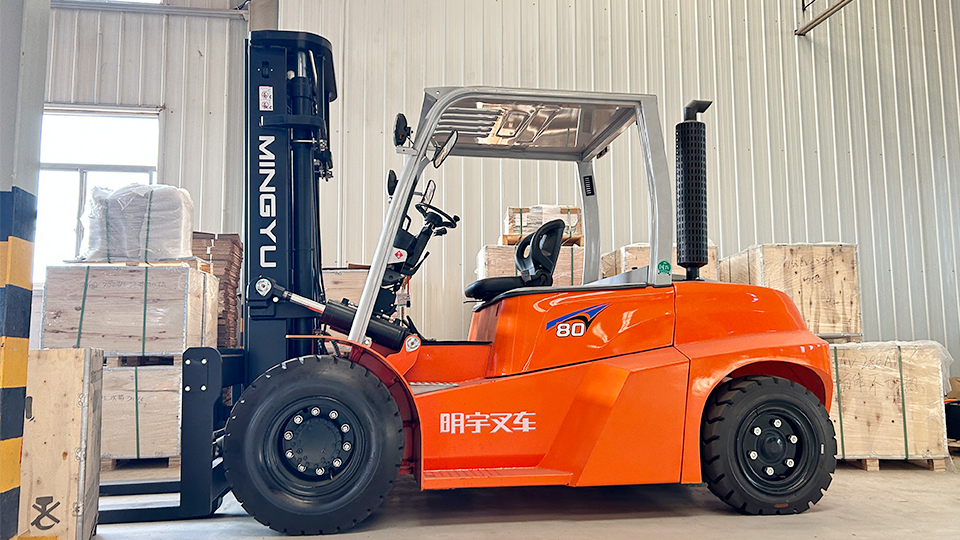
When operating a forklift, maintaining the correct fork height is crucial for safety, stability, and efficiency. This article will explore the recommended fork heights for different scenarios, the importance of proper fork height, and how to adjust the forks based on specific conditions.
General Guidelines for Fork Height
When driving a forklift without a load, the forks should be kept approximately 4 to 6 inches off the ground. This height ensures good visibility, stability, and reduces the risk of tripping hazards or hitting obstacles. However, some operators may prefer to keep the forks slightly higher, around 6 to 8 inches, to avoid small debris or uneven surfaces.
Importance of Proper Fork Height
Safety and Stability:
Keeping the forks low helps maintain the forklift's center of gravity, reducing the risk of tipping over.
Elevated forks can obstruct the operator's view, increasing the risk of collisions.

Load Security:
Proper fork height ensures the load remains stable and secure, preventing it from shifting or falling.
Equipment Protection:
Low forks help avoid damage to the forklift and the load, especially when navigating through tight spaces or over obstacles.
Adjusting Fork Height for Specific Conditions
Smooth Floors:
On smooth, even surfaces like warehouse floors, keeping the forks at the recommended height of 4 to 6 inches is usually sufficient.
Rough or Uneven Surfaces:
On rough terrain, such as construction sites or outdoor areas, raising the forks to 6 to 10 inches can help avoid bumps and debris.
Ramps and Inclines:
When approaching ramps or inclines, raise the forks slightly to prevent them from scraping the ground.
When descending ramps, lower the forks to maintain control and stability.

Loading and Unloading:
When approaching a load, stop 8 to 12 inches in front of it and ensure the forks are at the correct height before lifting.
When carrying a load, tilt the mast back slightly to secure the load and keep the forks as low as possible.
Parking:
When the forklift is parked, lower the forks completely to the ground to avoid tripping hazards.
Safety Considerations
Reduced Stability: Elevated forks raise the center of gravity, making the forklift more prone to tipping.
Obstructed Visibility: High forks can block the operator's view, increasing the risk of collisions.
Increased Risk of Impact: Elevated forks are more likely to hit overhead obstacles, causing damage.
Load Security: High forks can make the load less stable, increasing the risk of it shifting or falling.
Conclusion
Maintaining the correct fork height is essential for safe and efficient forklift operation. Generally, forks should be kept 4 to 6 inches off the ground when driving without a load, with adjustments made based on surface conditions, load weight, and specific tasks. By following these guidelines, operators can enhance visibility, stability, and overall safety, reducing the risk of accidents and damage.
Name: selena
Mobile:+86-13176910558
Tel:+86-0535-2090977
Whatsapp:8613181602336
Email:vip@mingyuforklift.com
Add:Xiaqiu Town, Laizhou, Yantai City, Shandong Province, China